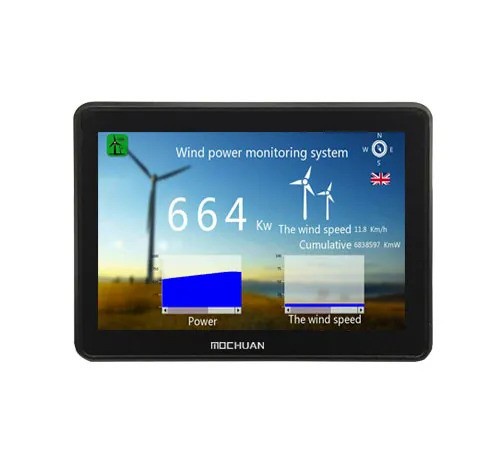In recent years, Human-Machine Interface (HMI) touch screen technology has witnessed remarkable advancements, revolutionizing the way users interact with various electronic devices. These innovations have significantly enhanced the overall user experience, making interactions more intuitive, efficient, and engaging. This section delves into the latest advancements in HMI touch screen technology and how they are transforming user experiences across a wide range of industries.
Multi-Touch Functionality: A Natural and Responsive Interaction
One of the key advancements in HMI touch screen technology is the integration of multi-touch functionality. Gone are the days of single-touch screens, as multi-touch technology enables users to interact with the screen using gestures such as pinching, swiping, and zooming. This intuitive form of interaction closely mimics gestures used in everyday life, allowing users to navigate through applications and menus effortlessly. Whether it is on smartphones, tablets, or industrial control panels, multi-touch technology has greatly improved the user experience by providing a more natural and responsive way of interaction.
Advanced Display Technologies: Immersive Visual Experiences
Another significant development in hmi touch screen technology is the introduction of advanced display technologies. High-resolution screens with vibrant colors and superior clarity have become more prevalent, creating visually stunning displays. This not only enhances the aesthetic appeal of devices but also improves the readability and visibility of on-screen information. Whether it is reading text, viewing images, or analyzing data, these advanced display technologies offer users a more immersive and engaging visual experience.
Haptic Feedback Technology: Realistic and Immersive Interaction
Furthermore, advancements in haptic feedback technology have significantly improved the user experience of touch screen panels. Haptic feedback refers to the tactile sensations produced by a touch screen, providing users with a physical response when they interact with the screen. This technology can simulate sensations such as vibrations, texture, and resistance, giving users a more realistic and immersive experience. Whether it is receiving a tactile response when pressing a virtual button or feeling the texture of a virtual object, haptic feedback enhances user engagement and adds an additional layer of realism to touch screen interactions.
Gesture Recognition Technology: Intuitive and User-Friendly Interactions
Additionally, the integration of gesture recognition technology has brought a new dimension to the user experience of HMI touch screen panels. With the ability to interpret and respond to specific gestures, touch screen devices can understand user intentions more accurately and provide relevant actions accordingly. This enables users to perform actions such as swiping to dismiss notifications, rotating images with a flick of a finger, or even using hand gestures for controlling devices in industrial settings. Gesture recognition technology adds an element of interactivity and convenience, making touch screen interfaces even more intuitive and user-friendly.
Enhanced Durability: Robust and Resilient Touch Screens
Moreover, advancements in touch screen durability have made devices more robust and resilient. The integration of technologies such as strengthened glass, scratch-resistant coatings, and water-resistant properties has significantly increased the lifespan and usability of touch screen devices. This not only improves the overall user experience by providing peace of mind but also ensures that the touch screen panels can withstand the demands of various environments and applications.
Conclusion: Transforming User Experiences Across Industries
In conclusion, the advancements in HMI touch screen technology have revolutionized the user experience across a diverse range of industries. With features such as multi-touch functionality, advanced display technologies, haptic feedback, gesture recognition, and improved durability, these innovations have made touch screen interactions more intuitive, engaging, and efficient. As technology continues to progress, we can expect further enhancements in HMI touch screen panels, leading to even more immersive and seamless user experiences.


No comments yet